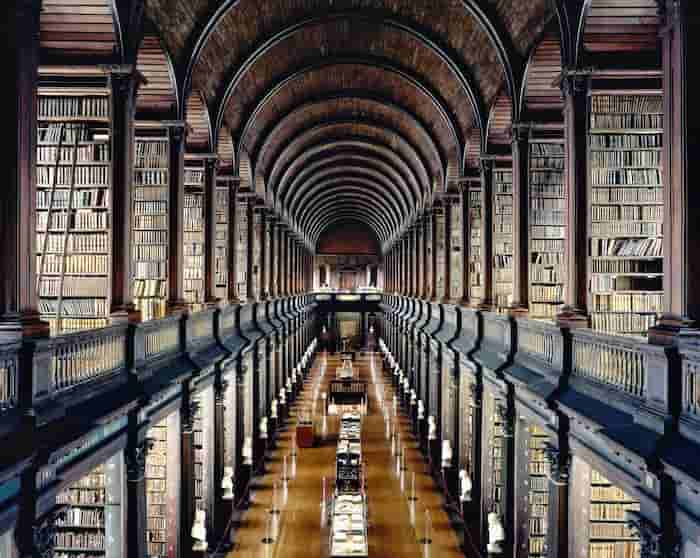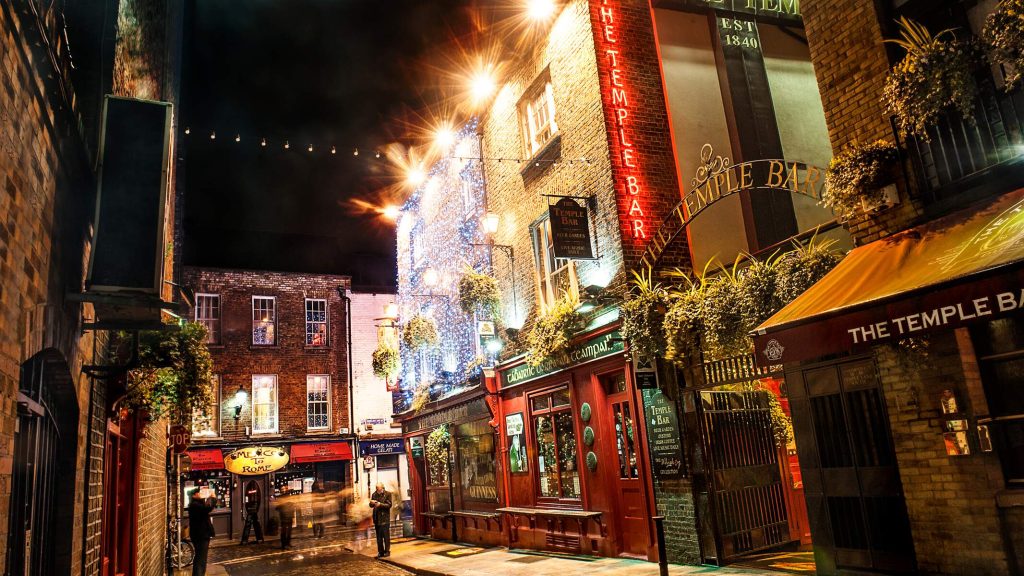- Top Ten Things to Do in Dublin: A Guide for Educators on Erasmus Mobility Programmes
- 1. Explore Trinity College and the Book of Kells
- 2. Visit the National Museum of Ireland
- 3. Stroll Through Phoenix Park
- 4. Tour the Guinness Storehouse
- 5. Wander Through Temple Bar
- 6. Learn at EPIC The Irish Emigration Museum
- 7. Enjoy a Literary Pub Crawl
- 8. Attend a Performance at the Abbey Theatre
- 9. Take a Day Trip to Howth
- 10. Visit Dublin Castle
- Conclusion – Enhance Your Erasmus Experience in Dublin
Top Ten Things to Do in Dublin: A Guide for Educators on Erasmus Mobility Programmes
Dublin, the vibrant capital of Ireland, is a city rich in history, culture, and educational opportunities. For educators participating in Erasmus mobility programmes, Dublin offers a plethora of activities that cater to both professional development and personal enrichment. Whether you’re keen on improving your English, learning new teaching methodologies, or simply exploring the cultural tapestry of this historic city, Dublin has something for everyone. Here are the top ten things to do in Dublin that will make your stay both enjoyable and educational.
1. Explore Trinity College and the Book of Kells
Dive into Ireland’s Literary Heritage

Trinity College Dublin, one of the world’s leading universities, is a must-visit for any educator. Established in 1592, this prestigious institution boasts a rich academic tradition. The campus itself is a historic gem, featuring stunning architecture and lush green spaces.
The highlight of any visit to Trinity College is the Old Library, home to the Book of Kells. This beautifully illuminated manuscript dates back to the 9th century and is considered one of Ireland’s greatest cultural treasures. Viewing the Book of Kells offers a unique glimpse into Ireland’s rich literary and artistic heritage, providing an inspiring environment for academic growth.
In addition to the Book of Kells, the Long Room in the Old Library is worth exploring. Housing over 200,000 of the library’s oldest books, the Long Room is a breathtaking sight with its high wooden shelves and marble busts of great philosophers and writers.
2. Visit the National Museum of Ireland
Uncover Ireland’s Past
The National Museum of Ireland has several branches in Dublin, each offering a unique perspective on Irish history and culture.
Archaeology: Located on Kildare Street, this branch features impressive collections from prehistoric times to the late medieval period. Highlights include the famous Ardagh Chalice, the Tara Brooch, and the extensive collection of bog bodies, which provide fascinating insights into Iron Age rituals.
Decorative Arts and History: Situated at Collins Barracks, this museum showcases Ireland’s social, economic, and military history. The exhibits include period furniture, silverware, ceramics, and a vast array of artifacts from the Easter Rising and the War of Independence.
Natural History: Known as the “Dead Zoo,” this museum on Merrion Street offers a captivating journey through the animal kingdom with its extensive collection of taxidermy specimens.
Each museum provides an immersive learning experience that enhances your understanding of Ireland’s past and present, making it a valuable stop for educators interested in cultural and historical context.
3. Stroll Through Phoenix Park
Enjoy the Great Outdoors

Phoenix Park, one of the largest enclosed public parks in any European capital city, spans over 1,750 acres. It’s home to the residence of the President of Ireland (Áras an Uachtaráin), Dublin Zoo, and vast green spaces perfect for a leisurely walk or a picnic.
The park’s expansive lawns, wooded areas, and picturesque lakes provide an ideal setting for outdoor activities. You can rent a bicycle and explore the many trails or simply relax and enjoy the natural beauty. The park is also home to a herd of wild fallow deer, adding to its charm and providing excellent photo opportunities.
The Dublin Zoo, located within Phoenix Park, is one of the oldest zoos in Europe. It offers an educational and entertaining experience, with exhibits that include animals from all over the world, many of which are part of international breeding programs aimed at conservation.
After a day of professional development sessions, Phoenix Park is an ideal spot to relax, reflect, and rejuvenate amidst nature.
4. Tour the Guinness Storehouse
Discover Ireland’s Brewing Heritage

No trip to Dublin would be complete without a visit to the Guinness Storehouse. Located in the heart of St. James’s Gate Brewery, this seven-story experience takes you through the history of Ireland’s most famous beer.
The tour begins at the bottom of the world’s largest pint glass and continues through interactive exhibits that explain the brewing process, the history of the Guinness brand, and its advertising campaigns. Each floor offers a different aspect of the Guinness story, from its founder Arthur Guinness to the science behind brewing the perfect pint.
The highlight of the tour is the Gravity Bar on the seventh floor, where you can enjoy a complimentary pint of Guinness while taking in the panoramic views of Dublin. The Guinness Storehouse offers a unique blend of education and entertainment, making it a great way to unwind and appreciate an integral part of Irish culture.
5. Wander Through Temple Bar
Experience Dublin’s Cultural Quarter

Temple Bar is known for its lively atmosphere, cobblestone streets, and cultural vibrancy. Located on the south bank of the River Liffey, it’s a hub for music, art, and nightlife.
During the day, you can visit numerous galleries, such as the Temple Bar Gallery and Studios, which features contemporary art exhibitions. The area is also home to the Irish Film Institute, where you can catch a screening of Irish and international films. For a unique shopping experience, explore the eclectic mix of boutiques, vintage shops, and markets, such as the Temple Bar Food Market held every Saturday.
In the evenings, Temple Bar comes alive with its array of traditional Irish pubs and live music venues. It’s the perfect place to enjoy traditional Irish music, meet locals, and immerse yourself in Dublin’s vibrant cultural scene. Temple Bar is an excellent place to meet fellow educators and exchange ideas in a relaxed, informal setting.
6. Learn at EPIC The Irish Emigration Museum
A Journey Through Irish Diaspora
EPIC The Irish Emigration Museum, located in the historic CHQ Building at Dublin’s Docklands, offers a comprehensive look at the history of Irish emigration and the global influence of the Irish diaspora. This state-of-the-art, interactive museum uses technology to bring history to life, making it particularly engaging for educators.
The museum’s exhibits cover over 1,500 years of Irish history, exploring why people left Ireland, where they went, and how they influenced the world. Interactive displays include video testimonies, touchscreens, and motion-sensor quizzes, providing a dynamic and immersive learning experience.
EPIC also delves into the personal stories of famous Irish emigrants and their contributions to the arts, science, politics, and sports. It’s a powerful reminder of the resilience and influence of the Irish people worldwide. This museum is particularly relevant for educators interested in migration patterns, cultural integration, and the impact of the Irish abroad.
7. Enjoy a Literary Pub Crawl
Follow in the Footsteps of Literary Giants
Dublin has been home to many literary greats, including James Joyce, W.B. Yeats, and Samuel Beckett. A literary pub crawl is a unique way to explore the city through the lens of its literary history.
These tours are usually led by actors and writers who perform readings and enact scenes from famous works as you visit historic pubs and literary landmarks. Stops often include locations associated with notable Irish writers and the pubs where they found inspiration.
The tour typically starts at the Duke Pub and winds its way through the city, combining education and entertainment in an engaging manner. It’s an excellent opportunity to learn about Dublin’s rich literary heritage while enjoying the convivial atmosphere of traditional Irish pubs.
8. Attend a Performance at the Abbey Theatre
Experience World-Class Theatre
The Abbey Theatre, Ireland’s national theatre, was founded by W.B. Yeats and Lady Augusta Gregory in 1904. It offers a rich programme of performances that highlight Irish culture, history, and contemporary issues.
Attending a play at the Abbey Theatre can be a deeply enriching experience. The theatre has a tradition of promoting new Irish writing and has staged works by some of the most significant playwrights of the 20th and 21st centuries, including Sean O’Casey, Samuel Beckett, and Conor McPherson.
The theatre’s productions often explore themes relevant to Ireland’s social and political landscape, providing insights into the Irish psyche and cultural identity. For educators, this can be a valuable opportunity to engage with contemporary issues through the medium of theatre and to experience the power of storytelling in a cultural context.
9. Take a Day Trip to Howth
Explore the Scenic Coastline
Just a short train ride from Dublin city centre, Howth is a picturesque fishing village offering stunning coastal walks, fresh seafood, and historical sites.

The Howth Cliff Walk provides breathtaking views of the Irish Sea and the surrounding landscape. The trail is well-marked and offers several routes, ranging from easy to challenging, making it accessible for all fitness levels. Along the way, you’ll encounter ancient ruins, lighthouses, and plenty of opportunities to spot local wildlife, including seals and seabirds.
Howth is also known for its excellent seafood. The village’s harbour is lined with restaurants and fish markets where you can sample the catch of the day. Howth Castle and its beautiful gardens are worth a visit, offering a glimpse into the area’s medieval past.
A day trip to Howth is a perfect way to unwind, connect with nature, and experience the beauty of Ireland’s coastline.
10. Visit Dublin Castle
Step Back in Time
Dublin Castle, a key landmark in Irish history, offers guided tours that cover its medieval origins, Georgian architecture, and significant role in the nation’s development.
Founded in the early 13th century on the site of a Viking settlement, Dublin Castle has played a central role in Ireland’s history. It served as the seat of the British government’s administration in Ireland until 1922, and today it is used for important state functions and presidential inaugurations.
Visitors can explore the State Apartments, which are lavishly decorated and used for state occasions. The Chester Beatty Library, located on the grounds, houses a world-class collection of manuscripts, prints, and artifacts from Asia, the Middle East, North Africa, and Europe.
Exploring the castle and its grounds can provide a deeper understanding of Ireland’s political and cultural history, making it a must-visit for educators interested in historical context.
Conclusion – Enhance Your Erasmus Experience in Dublin
Dublin is a city that seamlessly blends history, culture, and modernity, making it an ideal destination for educators on Erasmus mobility programmes. Whether you’re delving into academic resources at Trinity College, exploring the rich collections at the National Museum, or simply enjoying the vibrant atmosphere of Temple Bar, Dublin offers countless opportunities for personal and professional growth. By engaging with the city’s many attractions, you can enrich your teaching practice and return home with a wealth of new experiences and insights.
Visiting these top ten sites will not only enhance your understanding of Dublin and its cultural heritage but also provide you with valuable experiences that can inform your teaching and professional practice. Enjoy your time in Dublin, and make the most of this unique opportunity for growth and exploration!
